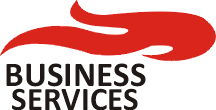Cleaning chemicals are an integral part of any successful cleaning regimen. In this guide, we’ll look at what types of cleaning chemicals are out there, how they work, and which ones are best for different kinds of cleaning applications.
Cleaning chemicals are an essential part of keeping our homes and businesses safe, hygienic and comfortable. However, it’s important to be mindful of the products we use as they often contain harsh toxic chemicals which can damage the environment and our health. A good approach to cleaning is to blend natural cleaners such as vinegar, baking soda, lemon or essential oils with eco-friendly cleaning products that don’t use harsh chemicals. Not only do these solutions reduce our exposure to dangerous toxins but they are also kinder to the planet. Taking a more natural approach to cleaning can go a long way towards improving environmental safety in our homes and communities.
Types of Cleaning Chemicals
The first step in selecting the right cleaning chemical is understanding the different types available. The most commonly used types include sanitizers, disinfectants, degreasers, detergents and deodorizers. Each type has its own uses and characteristics that make it more suitable for certain tasks than others.
Sanitizers reduce bacteria on surfaces to a safe level as determined by public health laws. Disinfectants kill germs on surfaces and are most often used in medical or food-handling settings. Degreasers break down oily substances such as grease and oil while detergents dissolve dirt particles from surfaces. Deodorizers remove unpleasant odours from the air or surfaces and leave a pleasant scent behind.
Choosing the Right Cleaning Chemical
When selecting a chemical cleaner for a specific job, it’s important to consider both the type of surface being cleaned as well as the nature of the stain or build-up being removed. For example, using a degreaser for general dirt removal will not be effective because it is designed specifically to break down oils and greases rather than dirt particles; likewise, using a disinfectant on an oil stain will not be effective because disinfectants are designed to kill germs rather than clean stains. It’s important to select the correct chemical for each job in order to get optimal results without damaging your equipment or surfaces being cleaned.
Selecting the right cleaning chemicals is key to achieving optimal results with minimal effort during your regular cleaning routine. Knowing what types of products are available and which ones work best with different kinds of materials can help you make informed decisions when it comes time to purchase supplies or restock existing products. With some knowledge about these products and careful consideration when shopping for them, you’ll have all the tools you need for successful sanitation no matter what kind of environment you’re working in!

